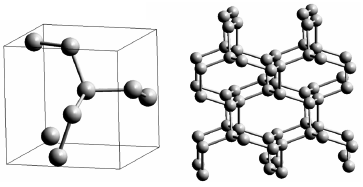Can combustion light gas guns use metallic hydrogen or something else to retain the compactness of a bullet and its casing and would this mess with my world (it has a decently high tech level and the faction with this tech is more advanced than the others with the tech being around the level of things like no aging, complete robotic bodies, and using big blobs of some kind of stuff as what’s basically a slow tank, also no space travel) and if impractical are there any feasible alternatives.
-
1$\begingroup$ Welcome to worldbuilding. I am not sure I understand what you are asking, can you maybe try to use some punctuation to split the sentences and add clarifying details? The help center can guide you in writing a good question. $\endgroup$– L.Dutch ♦Commented Dec 18, 2020 at 14:17
-
2$\begingroup$ Metallic hydrogen only exists under intense pressure. It's generally spoke of in relation to things like gas giants, whose cores might be such a material. It probably can't exist outside of exotic circumstances similar to my example. It would not be possible for bullets. $\endgroup$– John OCommented Dec 18, 2020 at 14:30
-
$\begingroup$ Perhaps you could use a fictional improved version of the hollow glass microsphere storage method to store your hydrogen propellant; en.wikipedia.org/wiki/Hydrogen_storage#Glass_microspheres. Other mechanisms for storing hydrogen can also be found on that page that may work for your scenario. $\endgroup$– GrumpyYoungManCommented Dec 18, 2020 at 23:18
-
$\begingroup$ It doesn’t have to store a lot, just enough to really give the bullet a lot of speed like today’s experimental CLG guns. $\endgroup$– QwertyiiCommented Dec 19, 2020 at 23:27
1 Answer
Cubic gauche nitrogen.
 http://www.esrf.eu/UsersAndScience/Publications/Highlights/2004/Materials/Mat12
http://www.esrf.eu/UsersAndScience/Publications/Highlights/2004/Materials/Mat12
This is trippy stuff, but it is real and people are making it. Nitrogen likes to be N≡N which is why it is so stable. High power rocket fuel often puts nitrogen into configurations it likes less, so when it relaxes back into N2 a tremendous amount of energy is released.
Cubic gauche nitrogen is the most powerful of all of them, and according to wikipedia
This cubic-gauche nitrogen is the highest energy non-nuclear material and is being investigated for use in explosives and rocket fuel.
Here is a cool article about people making the stuff under ambient temperature and pressure. If they can do it, people in your world can do it.
Cubic gauche polymeric nitrogen under ambient conditions
A large amount of energy (2.3 eV per atom) is expected to be released upon transforming singly-bonded nitrogen to diatomic triply-bonded molecular nitrogen. This chemical energy can be ideally stored during the transformation of a triple bond to three single bonds in polymeric nitrogen to form a high energy density material1. Consequently, single-bonded polymeric nitrogen should be a high energy density material with a range of applications as a metal-free “green” energetic material, or as a propellant... Here, we describe the synthesis and stabilization of polymeric nitrogen in its cubic gauche phase under near-ambient conditions employing plasma-enhanced chemical vapour deposition which is known to form high pressure phases, such as that of diamond at ambient conditions.
Cubic gauche nitrogen has an energy density of 33 kJ/G according to wikipedia. I was not able to find an estimated energy density for metallic hydrogen. If someone can, please add it!
-
1$\begingroup$ NASA lists metallic hydrogen's energy density(in state change only) as 216 MJ/kg : nasa.gov/pdf/637123main_Silvera_Presentation.pdf $\endgroup$– PcManCommented Dec 20, 2020 at 9:00
-
$\begingroup$ @PCMan: So metallic hydrogen is only 0.216 kJ/G and this polymeric nitrogen is 33? Your linked Nasa presentation has TNT at 4 Mj/kg. I think wikipedia is wrong and the cubic gauche nitrogen is 33 Mj/kg not kJ/G which makes it an order of magnitude stronger than TNT but an order of magnitude less than metallic hydrogen. But I am not confident enough to edit the wikipedia myself. $\endgroup$– WillkCommented Dec 20, 2020 at 18:46
-
$\begingroup$ aHem.. you slipped up you unit conversion there. not 0.216Kj/g... 216Kj/g. about 6.5 times the energy density of your gauche nitrogen. and "33 Mj/kg not kJ/G"... Mj/kg is exactly the same thing as Kj/g $\endgroup$– PcManCommented Dec 20, 2020 at 20:13
-
$\begingroup$ @PcMan - ah that pesky decimal point! Thank you for the correction. $\endgroup$– WillkCommented Dec 20, 2020 at 20:22
-
$\begingroup$ The paper said "This cubic-gauche nitrogen is the highest energy non-nuclear material", and it has 33 MJ/kg, but gasoline has 46 MJ/kg, I'm interpreting something wrong, or the affirmation the paper made was incorrect? $\endgroup$– FulanoCommented Mar 13, 2022 at 19:29
